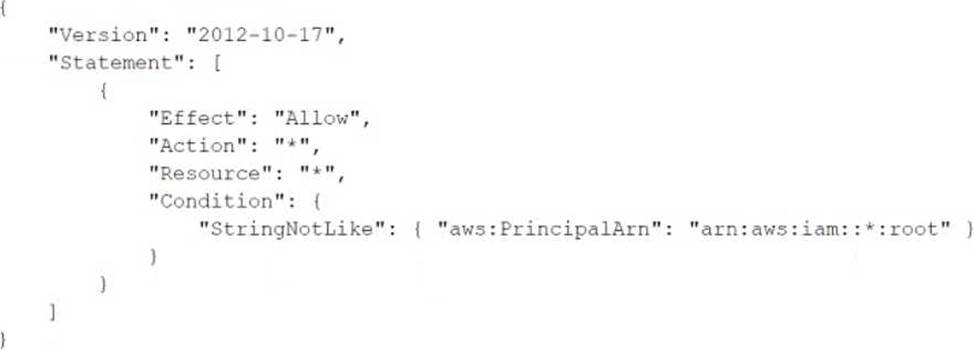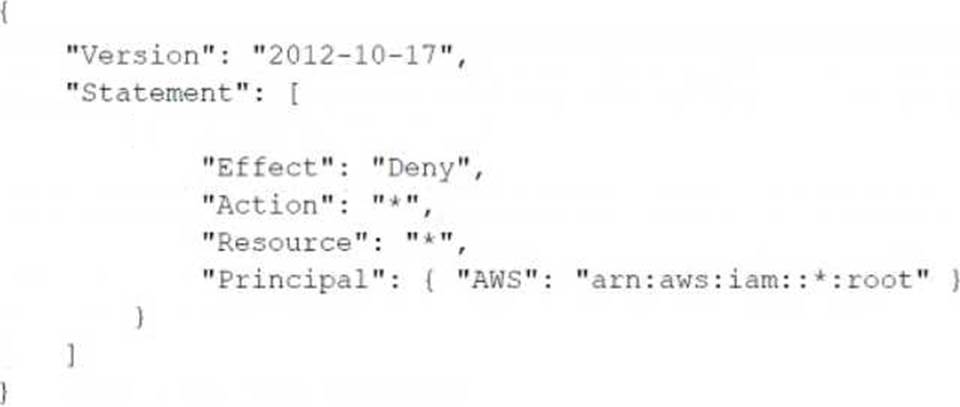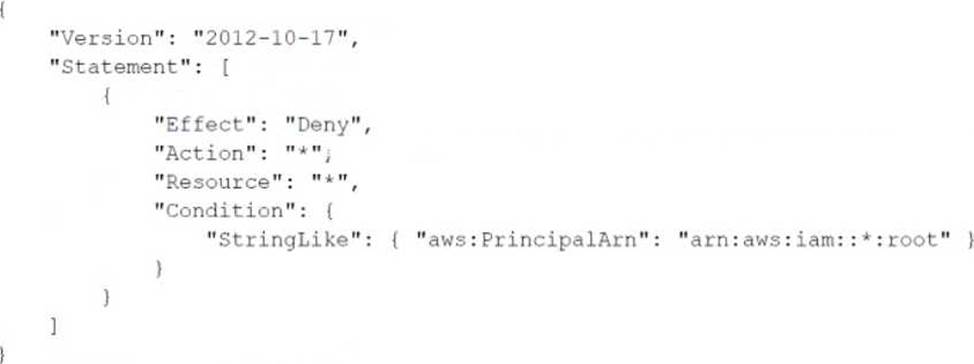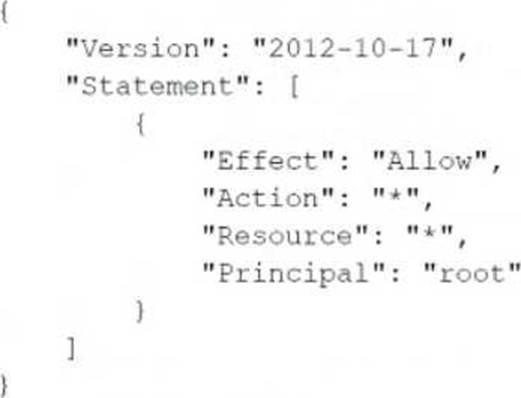Amazon DOP-C02 Real Exam Questions
The questions for DOP-C02 were last updated at Dec 18,2025.
- Exam Code: DOP-C02
- Exam Name: AWS Certified DevOps Engineer - Professional
- Certification Provider: Amazon
- Latest update: Dec 18,2025
A development team uses AWS CodeCommit for version control for applications. The development team uses AWS CodePipeline, AWS CodeBuild. and AWS CodeDeploy for CI/CD infrastructure. In CodeCommit, the development team recently merged pull requests that did not pass long-running tests in the code base. The development team needed to perform rollbacks to branches in the codebase, resulting in lost time and wasted effort.
A DevOps engineer must automate testing of pull requests in CodeCommit to ensure that reviewers more easily see the results of automated tests as part of the pull request review.
What should the DevOps engineer do to meet this requirement?
- A . Create an Amazon EventBridge rule that reacts to the pullRequestStatusChanged event. Create an AWS Lambda function that invokes a CodePipeline pipeline with a CodeBuild action that runs the tests for the application. Program the Lambda function to post the CodeBuild badge as a comment on the pull request so that developers will see the badge in their code review.
- B . Create an Amazon EventBridge rule that reacts to the pullRequestCreated event. Create an AWS Lambda function that invokes a CodePipeline pipeline with a CodeBuild action that runs the tests for the application. Program the Lambda function to post the CodeBuild test results as a comment on the pull request when the test results are complete.
- C . Create an Amazon EventBridge rule that reacts to pullRequestCreated and pullRequestSourceBranchUpdated events. Create an AWS Lambda function that invokes a CodePipeline pipeline with a CodeBuild action that runs the tests for the application. Program the Lambda function to post the CodeBuild badge as a comment on the pull request so that developers will see the badge in their code review.
- D . Create an Amazon EventBridge rule that reacts to the pullRequestStatusChanged event. Create an AWS Lambda function that invokes a CodePipeline pipeline with a CodeBuild action that runs the tests for the application. Program the Lambda function to post the CodeBuild test results as a comment on the pull request when the test results are complete.
A company is hosting a static website from an Amazon S3 bucket. The website is available to customers at example.com. The company uses an Amazon Route 53 weighted routing policy with a TTL of 1 day. The company has decided to replace the existing static website with a dynamic web application. The dynamic web application uses an Application Load Balancer (ALB) in front of a fleet of Amazon EC2 instances.
On the day of production launch to customers, the company creates an additional Route 53 weighted DNS record entry that points to the ALB with a weight of 255 and a TTL of 1 hour. Two days later, a DevOps engineer notices that the previous static website is displayed sometimes when customers navigate to example.com.
How can the DevOps engineer ensure that the company serves only dynamic content for example.com?
- A . Delete all objects, including previous versions, from the S3 bucket that contains the static website content.
- B . Update the weighted DNS record entry that points to the S3 bucket. Apply a weight of 0. Specify the domain reset option to propagate changes immediately.
- C . Configure webpage redirect requests on the S3 bucket with a hostname that redirects to the ALB.
- D . Remove the weighted DNS record entry that points to the S3 bucket from the example.com hosted zone. Wait for DNS propagation to become complete.
A company has chosen AWS to host a new application. The company needs to implement a multi-account strategy. A DevOps engineer creates a new AWS account and an organization in AWS Organizations. The DevOps engineer also creates the OU structure for the organization and sets up a landing zone by using AWS Control Tower.
The DevOps engineer must implement a solution that automatically deploys resources for new accounts that users create through AWS Control Tower Account Factory. When a user creates a new account, the solution must apply AWS CloudFormation templates and SCPs that are customized for the OU or the account to automatically deploy all the resources that are attached to the account. All the OUs are enrolled in AWS Control Tower.
Which solution will meet these requirements in the MOST automated way?
- A . Use AWS Service Catalog with AWS Control Tower. Create portfolios and products in AWS Service Catalog. Grant granular permissions to provision these resources. Deploy SCPs by using the AWS CLI and JSON documents.
- B . Deploy CloudFormation stack sets by using the required templates. Enable automatic deployment. Deploy stack instances to the required accounts. Deploy a CloudFormation stack set to the organization’s management account to deploy SCPs.
- C . Create an Amazon EventBridge rule to detect the CreateManagedAccount event.
Configure AWS Service Catalog as the target to deploy resources to any new accounts.
Deploy SCPs by using the AWS CLI and JSON documents. - D . Deploy the Customizations for AWS Control Tower (CfCT) solution. Use an AWS CodeCommit repository as the source. In the repository, create a custom package that includes the CloudFormation templates and the SCP JSON documents.
A company manages multiple AWS accounts in AWS Organizations. The company’s security policy states that AWS account root user credentials for member accounts must not be used. The company monitors access to the root user credentials.
A recent alert shows that the root user in a member account launched an Amazon EC2 instance. A DevOps engineer must create an SCP at the organization’s root level that will prevent the root user in member accounts from making any AWS service API calls.
Which SCP will meet these requirements?
A)

B)

C)

D)

- A . Option A
- B . Option B
- C . Option C
- D . Option D
D
Explanation:
A company is using an Amazon Aurora cluster as the data store for its application. The Aurora cluster is configured with a single DB instance. The application performs read and write operations on the database by using the cluster’s instance endpoint.
The company has scheduled an update to be applied to the cluster during an upcoming maintenance window. The cluster must remain available with the least possible interruption during the maintenance window.
What should a DevOps engineer do to meet these requirements?
- A . Add a reader instance to the Aurora cluster. Update the application to use the Aurora cluster endpoint for write operations. Update the Aurora cluster’s reader endpoint for reads.
- B . Add a reader instance to the Aurora cluster. Create a custom ANY endpoint for the cluster. Update the application to use the Aurora cluster’s custom ANY endpoint for read and write operations.
- C . Turn on the Multi-AZ option on the Aurora cluster. Update the application to use the Aurora cluster endpoint for write operations. Update the Aurora cluster’s reader endpoint for reads.
- D . Turn on the Multi-AZ option on the Aurora cluster. Create a custom ANY endpoint for the cluster. Update the application to use the Aurora cluster’s custom ANY endpoint for read and write operations.
A company runs an application on one Amazon EC2 instance. Application metadata is stored in Amazon S3 and must be retrieved if the instance is restarted. The instance must restart or relaunch automatically if the instance becomes unresponsive.
Which solution will meet these requirements?
- A . Create an Amazon CloudWatch alarm for the StatusCheckFailed metric. Use the recover action to stop and start the instance. Use an S3 event notification to push the metadata to the instance when the instance is back up and running.
- B . Configure AWS OpsWorks, and use the auto healing feature to stop and start the instance. Use a lifecycle event in OpsWorks to pull the metadata from Amazon S3 and update it on the instance.
- C . Use EC2 Auto Recovery to automatically stop and start the instance in case of a failure. Use an S3 event notification to push the metadata to the instance when the instance is back up and running.
- D . Use AWS CloudFormation to create an EC2 instance that includes the UserData property for the EC2 resource. Add a command in UserData to retrieve the application metadata from Amazon S3.
A company is hosting a web application in an AWS Region. For disaster recovery purposes, a second region is being used as a standby. Disaster recovery requirements state that session data must be replicated between regions in near-real time and 1% of requests should route to the secondary region to continuously verify system functionality. Additionally, if there is a disruption in service in the main region, traffic should be automatically routed to the secondary region, and the secondary region must be able to scale up to handle all traffic.
How should a DevOps engineer meet these requirements?
- A . In both regions, deploy the application on AWS Elastic Beanstalk and use Amazon DynamoDB global tables for session data. Use an Amazon Route 53 weighted routing policy with health checks to distribute the traffic across the regions.
- B . In both regions, launch the application in Auto Scaling groups and use DynamoDB for session data. Use a Route 53 failover routing policy with health checks to distribute the traffic across the regions.
- C . In both regions, deploy the application in AWS Lambda, exposed by Amazon API Gateway, and use Amazon RDS for PostgreSQL with cross-region replication for session data. Deploy the web application with client-side logic to call the API Gateway directly.
- D . In both regions, launch the application in Auto Scaling groups and use DynamoDB global tables for session data. Enable an Amazon CloudFront weighted distribution across regions. Point the Amazon Route 53 DNS record at the CloudFront distribution.
A company hosts its staging website using an Amazon EC2 instance backed with Amazon EBS storage. The company wants to recover quickly with minimal data losses in the event of network connectivity issues or power failures on the EC2 instance.
Which solution will meet these requirements?
- A . Add the instance to an EC2 Auto Scaling group with the minimum, maximum, and desired capacity set to 1.
- B . Add the instance to an EC2 Auto Scaling group with a lifecycle hook to detach the EBS volume when the EC2 instance shuts down or terminates.
- C . Create an Amazon CloudWatch alarm for the StatusCheckFailed System metric and select the EC2 action to recover the instance.
- D . Create an Amazon CloudWatch alarm for the StatusCheckFailed Instance metric and select the EC2 action to reboot the instance.
A company uses AWS Organizations and AWS Control Tower to manage all the company’s AWS accounts. The company uses the Enterprise Support plan.
A DevOps engineer is using Account Factory for Terraform (AFT) to provision new accounts. When new accounts are provisioned, the DevOps engineer notices that the support plan for the new accounts is set to the Basic Support plan. The DevOps engineer needs to implement a solution to provision the new accounts with the Enterprise Support plan.
Which solution will meet these requirements?
- A . Use an AWS Config conformance pack to deploy the account-part-of-organizations AWS Config rule and to automatically remediate any noncompliant accounts.
- B . Create an AWS Lambda function to create a ticket for AWS Support to add the account to the Enterprise Support plan. Grant the Lambda function the support:ResolveCase permission.
- C . Add an additional value to the control_tower_parameters input to set the AWSEnterpriseSupport parameter as the organization’s management account number.
- D . Set the aft_feature_enterprise_support feature flag to True in the AFT deployment input configuration. Redeploy AFT and apply the changes.
A company has multiple member accounts that are part of an organization in AWS Organizations. The security team needs to review every Amazon EC2 security group and their inbound and outbound rules. The security team wants to programmatically retrieve this information from the member accounts using an AWS Lambda function in the management account of the organization.
Which combination of access changes will meet these requirements? (Choose three.)
- A . Create a trust relationship that allows users in the member accounts to assume the management account IAM role.
- B . Create a trust relationship that allows users in the management account to assume the IAM roles of the member accounts.
- C . Create an IAM role in each member account that has access to the AmazonEC2ReadOnlyAccess managed policy.
- D . Create an I AM role in each member account to allow the sts: AssumeRole action against the management account IAM role’s ARN.
- E . Create an I AM role in the management account that allows the sts: AssumeRole action against the member account IAM role’s ARN.
- F . Create an IAM role in the management account that has access to the AmazonEC2ReadOnlyAccess managed policy.
